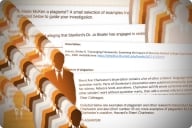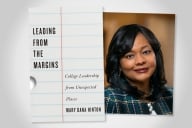You have /5 articles left.
Sign up for a free account or log in.
When The Great Gatsby was published in 1925, it landed with little fanfare. It wasn’t until after F. Scott Fitzgerald died in 1940 that the book took off, being selected for distribution to U.S. soldiers during World War II.
At the State University of New York Press, co-directors James Peltz and Donna Dixon are witnessing the posthumous comeback of one of their own authors, though on a less dramatic scale, and the book involved -- on music theory -- is probably a little too technical for anyone outside a related field.
A Theory of Harmony, by the late Ernst Levy, sold about 1,000 copies over 32 years. But in April British musician and arranger Jacob Collier mentioned the text in an interview. No one at SUNY Press was even aware of the interview until they noticed a mysterious spike in sales in May. Since the interview, A Theory of Harmony has sold about 800 copies. For a specialized scholarly text, years after publication, that’s almost unheard-of.
“We’re in uncharted territory here,” said Peltz.
Born in Switzerland in 1895, Levy, a pianist, professor and composer, moved from Paris to the United States in 1941. Having already written A Theory of Harmony, he would go on to translate it into English and shop around for a publisher, although he never found one. SUNY Press took the book in 1985, four years after his death. During his academic career, Levy taught at the University of Chicago, Bennington and Brooklyn Colleges, the Massachusetts Institute of Technology, and the New England Conservatory.
The book’s pre-April numbers -- 300 or so in lifetime hardcover sales, 677 paperbacks and 32 ebooks -- were respectable for an academic press, Peltz said. In 2016, there were 29 paperback sales, and 32 this year before Collier’s interview. The timing of its initial publishing helped keep it around for this long -- a surplus from the initial printing kept the niche book in stock until the advent of printing on demand from Amazon, which is how the press has been able to keep up with the newfound demand.
Collier, in his interview with June Lee, a graduate student at Indiana University’s Jacobs School of Music, can hardly contain his excitement when asked about the concept of negative harmony, which is when he brings up Levy and A Theory of Harmony.
“His idea is that harmony can exist -- any chord and any key has a reflection, a polar opposite chord within that key center, based on rotating every single note around the axis of that key center,” Collier says before diving deeper into the different technicalities of the theory. In all, he only speaks about Levy’s book and theory for about two minutes before moving on.
The interview, almost 13 minutes long, with the reference to the book coming at the 1:30 mark, has gained more than 560,000 views on YouTube, and the book has since seen 773 paperback sales and 85 ebook sales. (In 2015 and 2014, the book sold a combined seven copies.)
So will Levy be the next Fitzgerald?
“I’m guessing it’s going to be a blip,” Peltz said of the surge in sales, which have been mostly concentrated in the U.S., England, Germany and Japan. “But I’ll be pleasantly happy, surprised -- I don’t think it’s going to continue to sell 300 a month, but it could sell 15, 20 a month.”
Since the book is printed on demand through Amazon, SUNY Press wasn’t aware of the spike in sales until it got its monthly report from the online retail giant, Dixon said. Her first clue to the book’s resurgence came when she received an email from a student at SUNY’s Purchase campus asking her for a free PDF of the book. She responded by directing the student to the institution’s library and wondered if a professor had assigned the book for a course, which had been the driver of sales in the past. The next week, looking over the monthly data from Amazon, she saw the sales skyrocketing, with purchases from around the world.
“I said, ‘This isn’t a few -- this is hundreds,’” she said.
Finding the reason for the sales was “a game of connect the dots,” Peltz said. He and Dixon googled the book’s title to find any chatter, then came across an Amazon review that linked it to Collier having mentioned it. Then, after researching Collier, whom they hadn’t heard of before, they found the video, which lined up with the timeline of the sales spike.
“For me, one of the most joyous things about it is that this young musician came across this book -- and he said in the video, ‘It’s decades old’ -- and was so inspired by it and could articulate the theory to the people who were watching him and incorporate it into his music in new ways,” Dixon said.
Dixon and Peltz shared their story with some mutual friends who were jazz musicians -- it turned out they were already familiar with Collier’s video.
“They said, ‘We didn’t know this was your book -- we were all over this video,’” Dixon said.
Forty years ago, this story couldn’t have happened, Peltz said. YouTube didn’t exist, obviously, and things didn’t go viral the way they do now. But most crucially, he said, with printing on demand, wait times -- especially for international sales, which he estimated to be a quarter to a third of recent sales -- are greatly reduced.
“They would have all been on back order. We would have had to reprint, ship; it would take four to six to eight weeks to get to Europe,” he said.
For Peltz and Dixon, the weird, winding story of a niche music book finding a new audience is exactly what academic presses are all about.
“That’s what university presses do -- we keep books in print forever, hoping that they find their time. And this one certainly did,” Peltz said.








